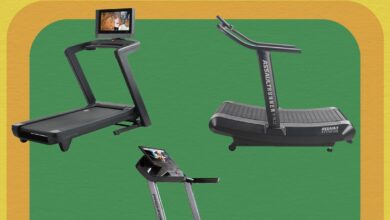Does Yoga ‘Count’ as Strength Training? Cardio? Both?

As for the functional strength benefit? That comes from doing postures that engage various muscle groups simultaneously and replicate daily actions like bending, lifting, pushing, pulling, squatting, rotating, side-stepping, and more, she adds.
Yoga builds strength, but not necessarily in the same way lifting weights does.
Following in line with the functional benefit, yoga generally strengthens across your entire body, Candace Harding, DPT, a physical therapist specializing in orthopedics and a registered yoga teacher in Arlington, tells SELF. That’s because a lot of classes engage large muscles in your legs, upper body, and core through moves like lunge variations, push-ups, and high plank holds.
But this doesn’t mean yoga smokes every single muscle you have. To challenge certain ones (like your lats, or your broadest back muscle, for example), you really need to pick up weights and pull them toward you, use resistance bands or cables, or do moves like chin-ups, inverted rows, and pull-ups that have you pulling the robust external load that is your bodyweight—all things you likely wouldn’t encounter in a yoga class.
Using this extra resistance is also important if your goal is to improve maximum strength and power, Fryer says, since yoga likely doesn’t deliver enough of a challenge to reap those gains. That’s because in yoga, you can’t make the stimulus heavier, since you’re limited to just using your bodyweight.
Final thing: How much yoga counts as strength training depends on how strong you are to begin with. “It makes a difference where someone’s coming from,” Dr. Harding explains. For example, if you’re brand new to exercise, you’ll probably get a lot of strength benefits from the practice, since moving around your bodyweight will automatically be pretty tough for you, whereas if you’re a regular gym-goer, you may not reap as many perks since you’ll already have a solid baseline level of strength. That said, even experienced weight lifters could see gains by adding yoga to their routine, since it taxes your muscles in a different way, Dr. Harding says—it involves putting your muscles under tension for a greater amount of time than what they’d do in the gym when moving heavier loads for shorter periods. .
Can you consider yoga a cardio workout?
Cardiovascular exercise is generally defined as anything that demands more oxygen intake and involves the cyclical, repeated movement of large muscle groups, Dr. Harding explains. So answering whether yoga counts as cardio “has a lot to do with the pace of the class,” she says.
For instance, classes that have you flowing continuously through movements—like vinyasa, power yoga, and hot yoga—can definitely elevate your heart rate and provide cardio benefits, Fryer says. Just keep in mind that compared to more traditional aerobic activities like running and biking, the aerobic challenge yoga offers is generally “on the more mild side,” Dr. Harding says. Slower-paced sessions, like yin or restorative, wouldn’t provide a cardio challenge.
Similar to the strength benefits, how much cardio yoga provides depends on your current fitness level. “If someone’s been sedentary, yoga may be enough” to qualify as moderate or possibly vigorous-intensity cardio, Dr. Harding says. But for an already active person, it may not bring a ton of heart-boosting benefits.
Yoga also checks a few more boxes too.
If you’re looking to improve your balance, yoga can be a smart choice. Really any type of class that flows through poses (unless it’s designated as “therapeutic” or “slow”) will challenge your ability to keep from wobbling, Dr. Harding says. Specifically, moves that have you standing on one leg—like tree pose, eagle pose, and dancer’s pose—will test, and ultimately bolster, your steadiness. Indeed, a 2015 meta-analysis of six studies involving older adults published in Age and Ageing concluded that yoga led to small gains in balance, as well as moderate boosts in mobility.



